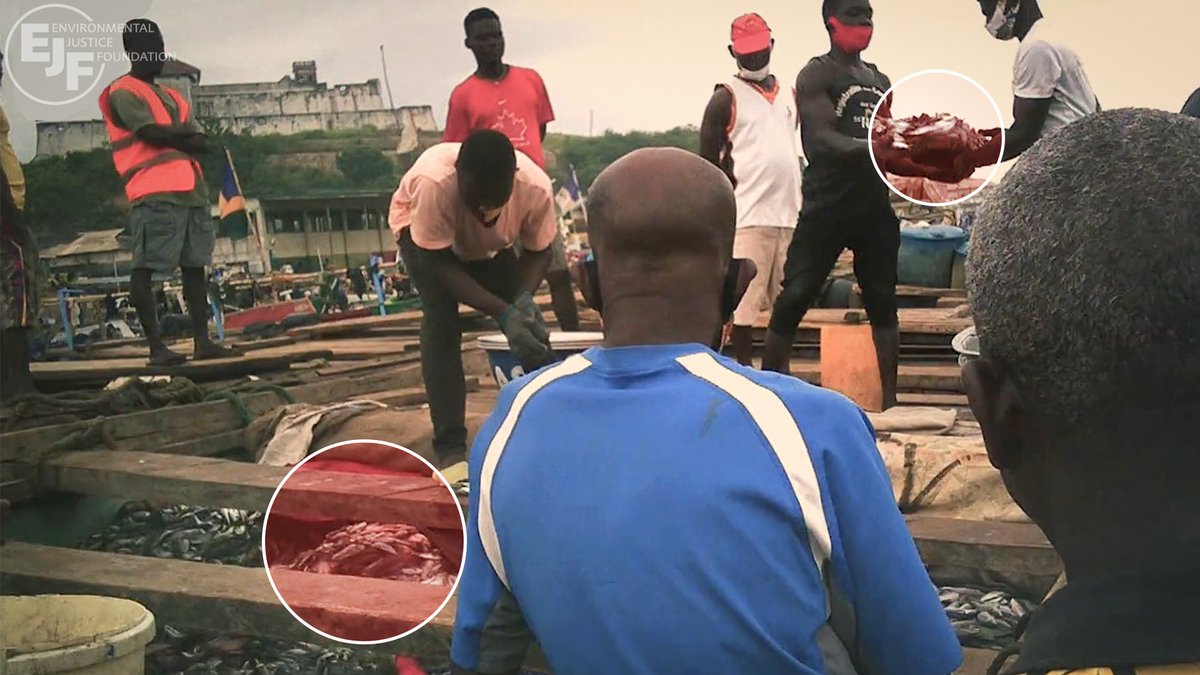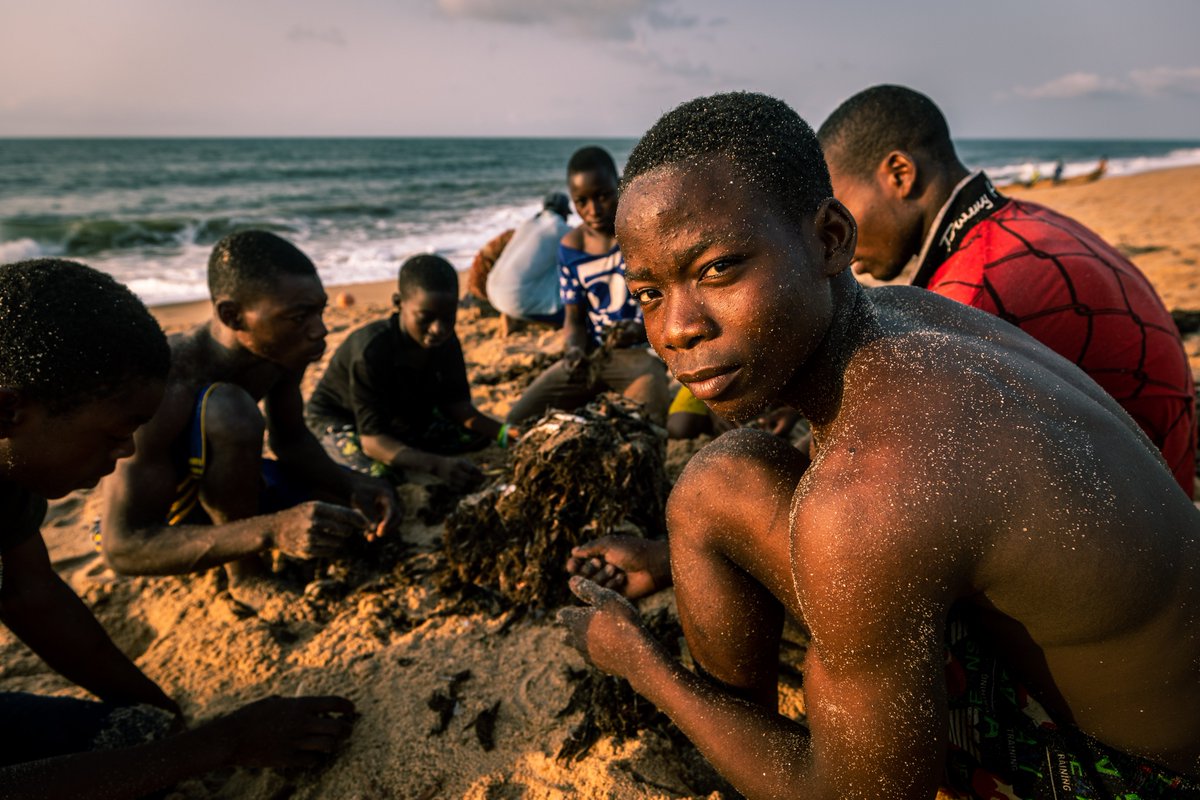Since 2017, we have been uncovering the truth about a devastating form of illegal fishing called ‘saiko’. Early interviews with local small-scale fishers suggested that this trade was decimating the last of Ghana& #39;s dwindling fish populations. @ejfoundation @EuropeInGhana @S_I_F
We use satellite technology to monitor the activities of vessels at sea. Later in 2017, some unusual patterns began to emerge. At night, a number of industrial trawlers would creep towards the zones reserved for local fishers, before heading back to sea before dawn. @ejfoundation
The @ejfoundation& #39;s team on the ground began monitoring the local ports. They witnessed the landing of thousands of tonnes of frozen fish. The canoes that carry them have no way to freeze fish on board, they don’t even carry fishing nets - so where is the fish coming from?
To answer that question we need to take a step back. In recent decades, Chinese-owned industrial trawlers have flocked to Ghana& #39;s once-rich waters to fish for high-value commercial species, like octopus, to export overseas. @ejfoundation @henmpoano @EuropeInGhana @MofadGhana
But these trawlers began to fish increasingly close to the shore, sometimes using illegal small-mesh nets and adapting their fishing gear to target the small pelagic fish that should be reserved for local small-scale fishers. @FCWC_CPCO @ejfoundation @henmpoano @FisheriesGhana
In February 2019, having documented the unloading of frozen fish in port, EJF’s investigators wanted to see where it was coming from. Months of satellite monitoring from staff gave an idea of what they might find if they followed the canoes to their suspected destination...
12 miles offshore in the early hours of the morning we spotted what they’d been looking for - an industrial trawler, the Meng Xin 10 transferring fish onto the waiting canoe. With the navigation lights off, the team were able to document the trans-shipment from a safe distance.
This is where the frozen fish was coming from. Using highly sophisticated, destructive, and often illegal equipment, industrial trawlers are stealing huge quantities of fish from the grounds of local fishers, and freezing the catch on board. @ejfoundation @henmpoano @MofadGhana
They then sell this fish back to local communities for extra profit. Fish populations are devastated by trawlers. In a single trip, an average saiko canoe will land 450 times the catch of an artisanal fishing trip. Local fishers simply cannot compete. @EuropeInGhana @FCWC_CPCO
The trawlers themselves are run almost exclusively by Chinese operators. We found that over 90% of industrial trawlers operating under the Ghanaian flag are linked to Chinese ownership, despite a ban on foreign ownership in the industrial trawl sector. @S_I_F @FisheriesGhana
To find out more about the ‘saiko’ menace, watch our film here: https://vimeo.com/ejfoundation .">https://vimeo.com/ejfoundat... @MofadGhana @FCWC_CPCO @GhanaFoN @henmpoano @CERATH_DevOrg @GhanaCanoe @NafptaGhana @FisheriesGhana @Adom1063fm
Today, we are still raising the alarm on this highly destructive trade. This is footage taken by our undercover investigators in June, where 10 or more saiko canoes land at Elmina every day. This is despite a promise from Ghana& #39;s government in November 2019 to stop saiko.
Saiko must be stopped, now and for good. It’s now or never. Fishers are already catching almost nothing in what should be peak season, & small pelagic fisheries are showing signs of total collapse. 10% of Ghanaians depend on coastal fisheries for their livelihoods. #StopSaikoNow
Ghana also already imports over half its domestic fish consumption, as food security is threatened by collapsing fisheries. The human cost of saiko is catastrophic. Help us spread the word and share this thread. #StopSaikoNow @MofadGhana @ejfoundation @henmpoano @FCWC_CPCO

 Read on Twitter
Read on Twitter



